Finding summaries of studies
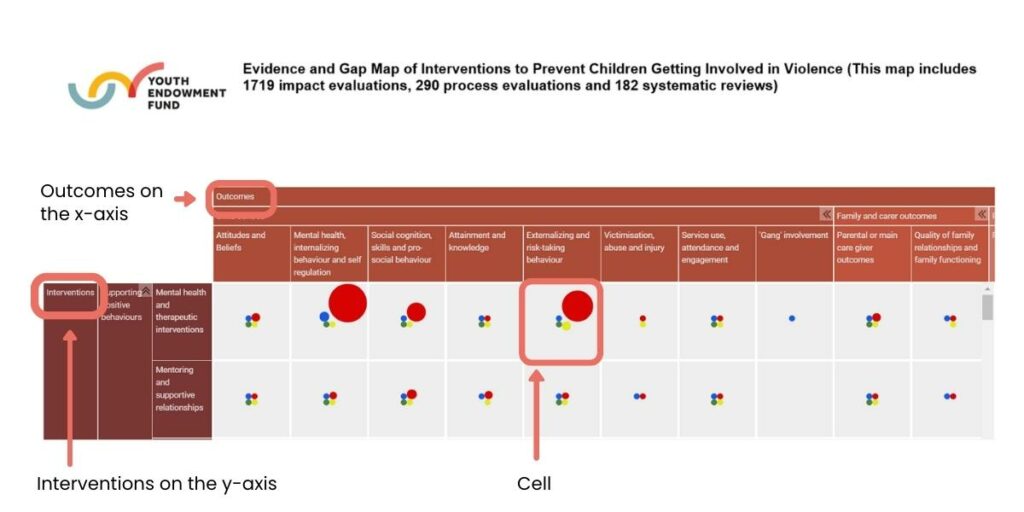
At first glance, the Programmes Evidence and Gap Map looks like a table. On the y-axis (which is vertical), the Evidence and Gap Map lists the type of intervention a study was investigating (for example, sports activities or mentoring). On the x-axis (which is horizontal) it shows the outcome that a study was measured (for example, changes in risk-taking behaviours). Each study is categorised under at least one intervention and outcome box known as a ‘cell’. So in each cell, you can see how many studies are looking at a particular intervention and outcome combination (for example, how many studies of mental health interventions looked at the changes they made to a child’s attitudes and beliefs).
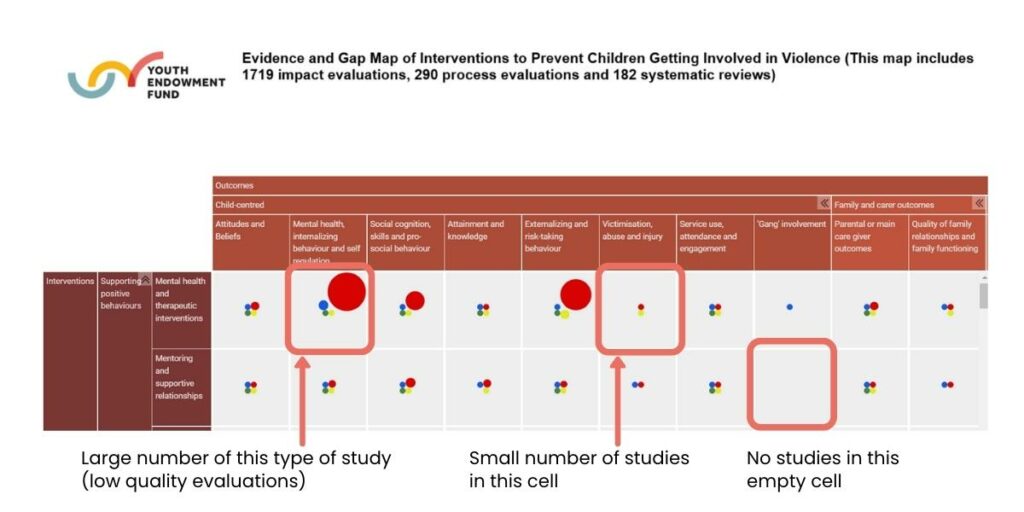
The default Evidence and Gap Map view is known as a ‘bubble map’ where the size of the circle in each cell represents how many studies have been found. For example, an empty box means there aren’t any studies looking at a specific intervention and outcome. A small circle means there might be a few studies, while large circles mean there are lots of studies.
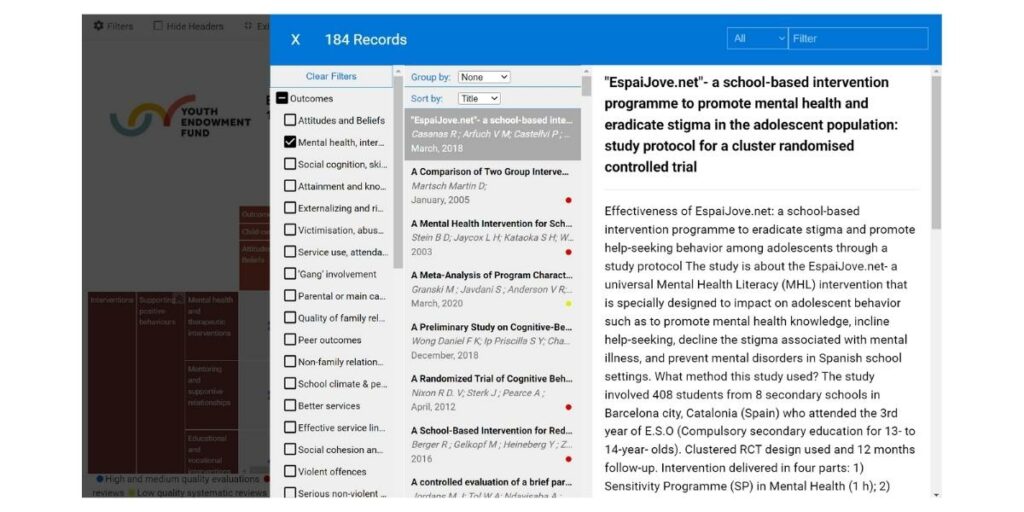
When you click on a ‘bubble’, a text box appears. It lists the individual studies included in that particular type of intervention and outcome combination. In the text box there is a brief description of each study (similar to, but not identical to the abstract) and a link that takes you to the website containing the full study.
Filtering your results
You can access the filters by clicking the ‘Filters’ tab in the top left-hand corner of the screen, then ticking your chosen options. You can also access ‘Filters’ when you click on a relevant column/row header on the map.
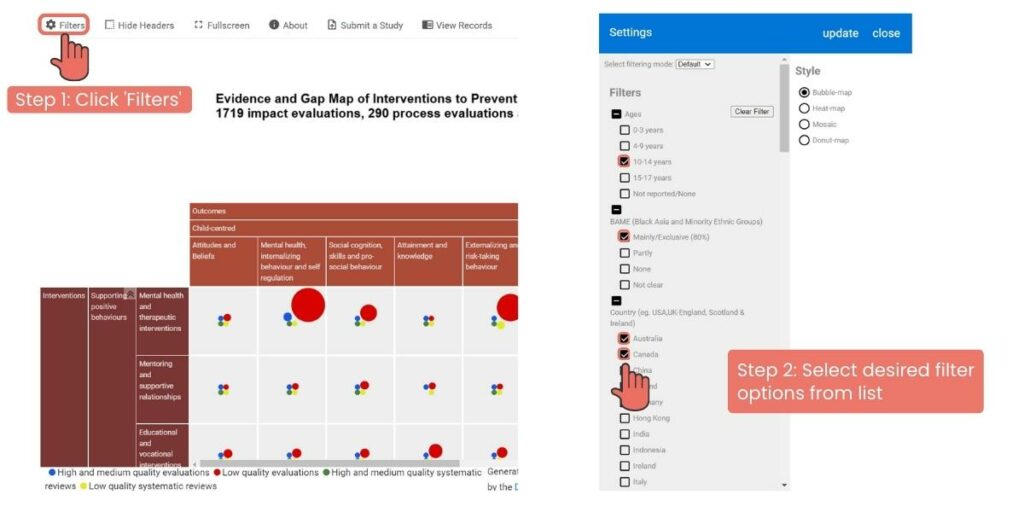
Filters help you to refine your search for different studies. You can search the studies in the Evidence and Gap Map by:
- The country the programme was run in
- The type of setting an intervention was run in (for example, schools or in the home)
- Level of targeting (whether programmes were for all children or only those identified as being at)
- Whether an intervention is delivered to groups or individuals
- Demographics (including the age or ethnicity of the children an intervention was aimed at)
- The quality of the study (how robust the evidence is)
- The year the study was published
- Whether the study is completed or ongoing
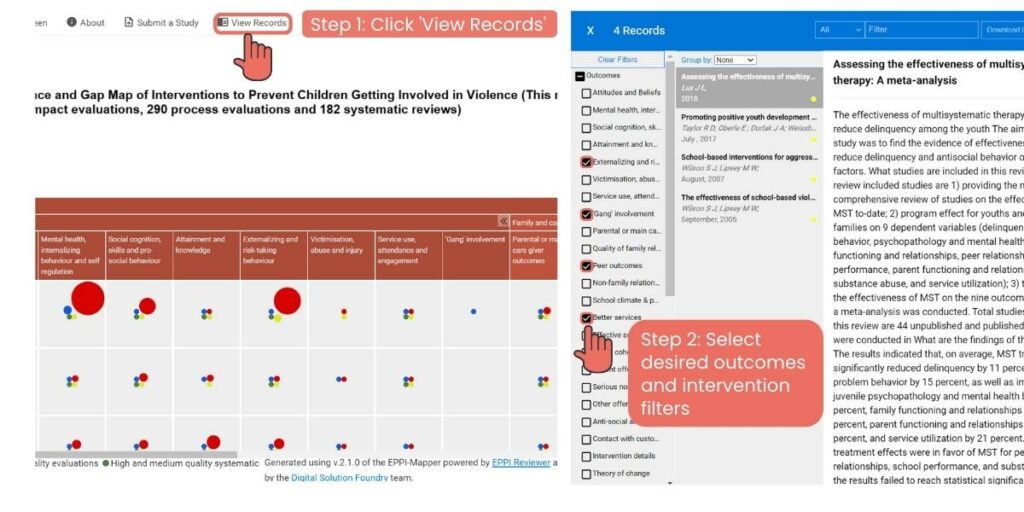
You can also search for studies by different outcomes and interventions. To do this, click the ‘View Records’ tab at the top of the screen.
